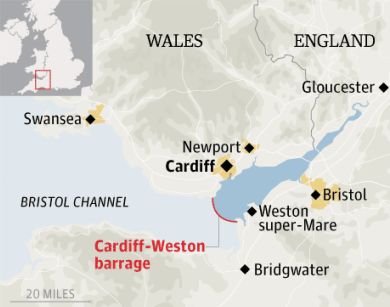 |
| Director Helen Iles at the premier of Living In the Future. |
Last week, a remarkable film sold out in all theatres in which it premiered, and I was lucky enough to get a ticket.
It tells the story of a five-year battle by ordinary people fed up with not having access to housing that they could afford, who wanted to build affordable, ecologically-sound housing for themselves on land which they owned.
The story began when nine families occupying 35 acres of land in South Wales innocently submitted boxes of detailed architectural designs and plans to their local council, seeking approval, which was initially met with hostility. The leader of the council is filmed saying: "Not now, not ever. Never!" as he rejected their application.
Their battle eventually succeeded, and resulted not only in a change in planning policy in that council, which has been adopted throughout Wales, thanks to the support of Wales' former Environment Minister, Jane Davidson, but a campaign to change the Building Regulations themselves, which, at present, are totally unfit for the purpose of enabling this type of architecture.
The film is Living In The Future. After the screening I talked to the director, Helen Iles, who has spent several years following, and filming, the development of this project.
The organisation involved, Lammas, set up an eco-village, Tir y Gafel, and are using it as a pioneering project to inspire others to do the same throughout the country.
It contains the first buildings in the country that are of ‘low impact’ and built with planning permission in accordance with Building Regulations.
These buildings use traditional methods of construction: timber frame, round houses, straw bale, and all natural materials: sheeps' wool for insulation, roundwood, mud.
Buildings for all of the families and a community building were constructed for the astonishingly low total cost of about £70,000. Of course, much of the labour was free, coming from the many volunteers who turned up to help.
The local council has stipulated that within three years 75% of the settlement's income must be self generated from the land, as a planning condition. This is a target the village’s inhabitants are still struggling to meet.
I asked Helen why she chose to focus on the planning issue for the substance of her movie. "It is incredibly hard to get councils to understand this type of settlement and building," she said.
"Not only that, but the Building Regulations are geared to conventional types of construction. If, for example, people want to have an outside composting toilet, then officials say: "Why? Surely we've left all that behind!'"
Similar issues apply to the choice of building materials and sewage treatment using reedbeds.
In fact, when the Building Enforcement Officers visited the site they came up with a list of hundreds of things that should have been done. In the end, these were whittled down to a few that were relatively easy to deal with, compared, that is, to knocking the buildings down and starting all over again.
You would class the people pursuing this dream as hippies. But I was reminded of the early days of the Centre for Alternative Technology, where I used to work. This started in much the same way, as an experiment in sustainable living in the early ‘70s, and was also founded by a peculiar mixture of hippies and upper-class dropouts.
The solutions that they pioneered are now mainstream simply because the mainstream has recognised the necessity of making them so.
I am confident that, while the nature of the buildings might change a little, and that the vast majority of people will not live in this kind of housing, a great many do want to live closer to nature, and in buildings that are softer and friendlier which they can design themselves and which are much, much cheaper.
With so many people needing affordable housing, you can hardly argue that there is no demand. The degree of interest in this type of living is evidenced by how popular the film has proved last week.
What is obvious from watching the film is the extreme stress suffered by these pioneers as they struggle not only with bullying of families and growing food, but building their homes and dealing with a non-comprehending bureaucracy.
They were lucky to have a friend in Jane Davidson.
"Jane was a visionary herself," said Helen. "She came and listened to the people at Lammas. She always listened to people. She was the best Environment Minister Wales has ever had. Most of her policies came from the ground up."
Sadly, Jane retired from politics and the Welsh Assembly Government to concentrate on her smallholding, and is now Director of the Wales Institute for Sustainability at the local Trinity St David University.
But the legacy she has left includes the vision of One Planet Living, which underpins the Welsh Assembly Government's Technical Advice Note 6 "Planning For Sustainable Rural Communities", part of Wales' comprehensive planning policy in line with its constitutional commitment to sustainable development, something which makes Wales unique in the whole world.
Planning officers everywhere deserve to take note of the experience of Pembrokeshire and the Welsh Assembly Government. Largely unseen by the majority, a quiet revolution is taking place.
At some point other communities will spring up in other parts of the country.
The film, admirably financed by the Welsh Assembly Government, is available under Creative Commons principles, i.e. it has no copyright, but the makers would appreciate a donation or the payment of a voluntary fee for public showings.
I recommend you to view it, visit the eco-village, and support the campaign to get the Building Regulations changed.
